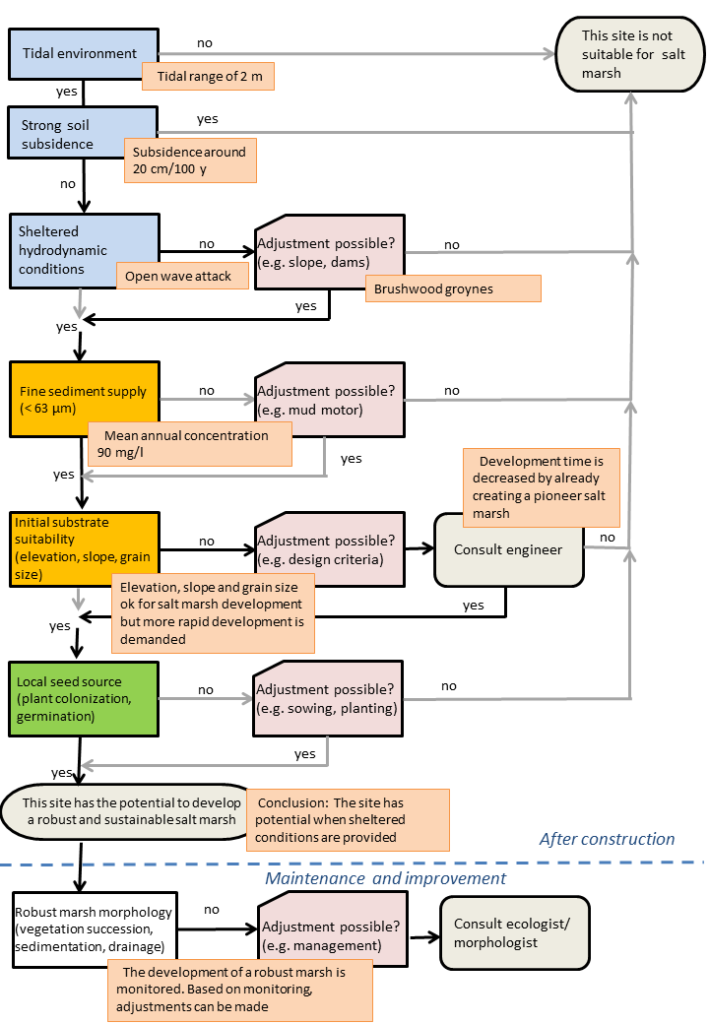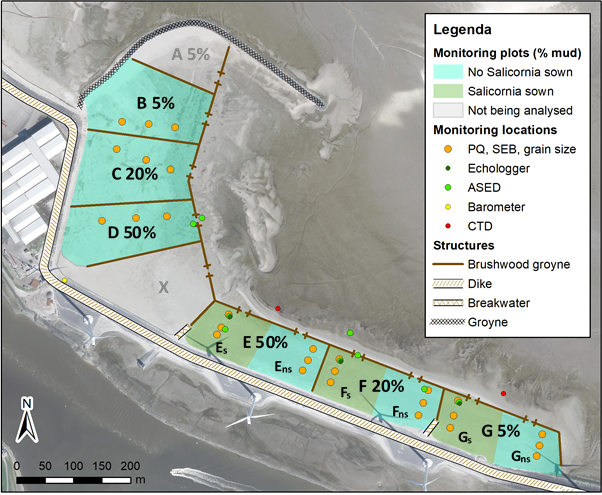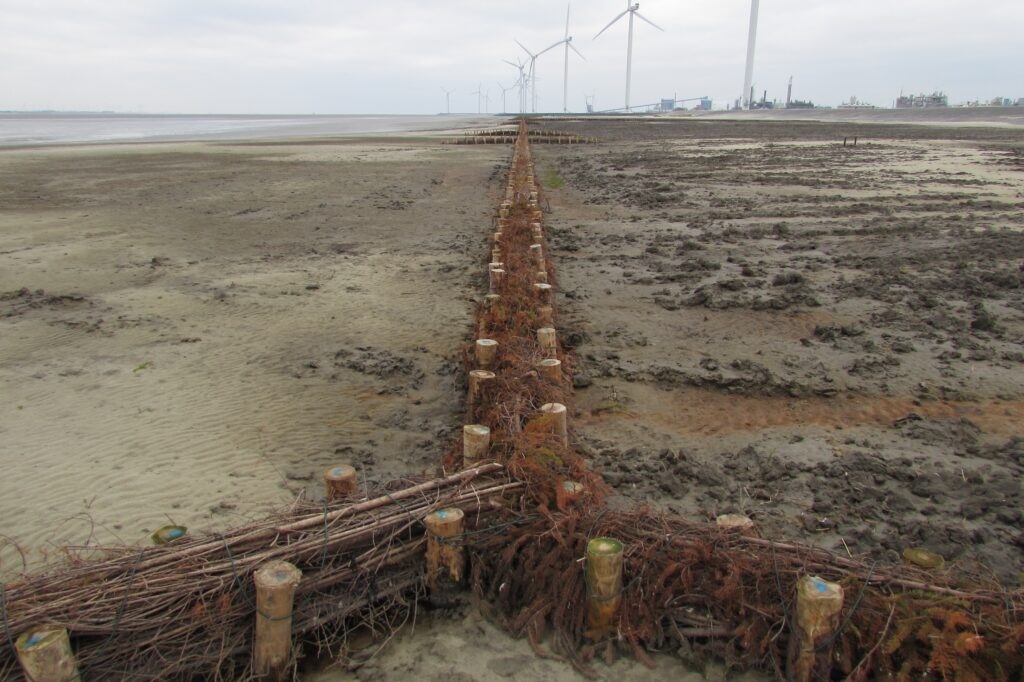Planning and design
Creating suitable conditions for salt marsh development
To find out whether an area is suitable for salt marsh development and how to initiate the development, the Salt Marsh Flow Chart was followed (see below). At the location of the EcoShape salt marsh pilot, natural development of a salt marsh was not possible because the bed level was too low and there was too much wave energy. Therefore, a protective riprap groyne was built, and the bed level was raised to kickstart salt marsh development.
The base of the salt marsh consists of a sand fill. The bed level was designed to be between 0.60 and 1.50 m +NAP in a gradient of 1:140, so that the height of the salt marsh would be largely below mean high water (MHW) of 1.4 m +NAP. The construction height was higher, considering an assumed compaction and consolidation of about 30 cm.

Design to answer research questions
An important goal of the salt marsh pilot is to develop knowledge about how design and construction methods affect the development of a man-made salt marsh with a focus on the following research questions:
- What is the effect of soil mud content on the morphological (especially the development of tidal creeks) and biological salt marsh development?
- What effect has seeding on the rate of vegetation development in a constructed salt marsh?
To be able to answer the main research questions, the pilot salt marsh was designed to have six different compartments (B, C, D, E, F, G), bordered by brushwood dams and varying in soil mud content and whether they were seeded.
To test the effect of mud enrichment on salt marsh development (especially the development of tidal creeks), different percentages (5, 20 and 50%) of mud (clay and silt) are mixed in the top 1.0 m of the bed. The mixing depth of 1.0 m meter was chosen for the design as one meter approximates the maximum depth of creeks at natural salt marshes.
To test whether seeding with a pioneer species accelerates salt marsh development, the southern compartments E, F and G were partly seeded with fragments of glasswort plants (Salicornia procumbens).


Design of the monitoring program
A monitoring program was designed to determine sedimentation-erosion rates, development of tidal creeks, bed height, flooding frequency, vegetation cover and density and condition of the glasswort plants (see also Operation and maintenance). Measuring instruments that were used include LiDAR drone, RTK-DGPS, CTD’s, Sedimentation-Erosion Bars (SEB), and Acoustic Surface Elevation Dynamics (ASED) sensors.
